How to Arrange and Align Objects in Google Slides

When you’re working on a presentation, you need to take into account a proper arrangement and alignment of the objects present on your slides so that your audience doesn’t get lost and stays focused. In this new Slidesgo School tutorial, you’ll learn step by step how to arrange and align elements in Google Slides.
Arranging an Object
- Open your Google Slides presentation.
- Go to the slide that contains the object to be arranged and select it.
- On the top menu, click Arrange.
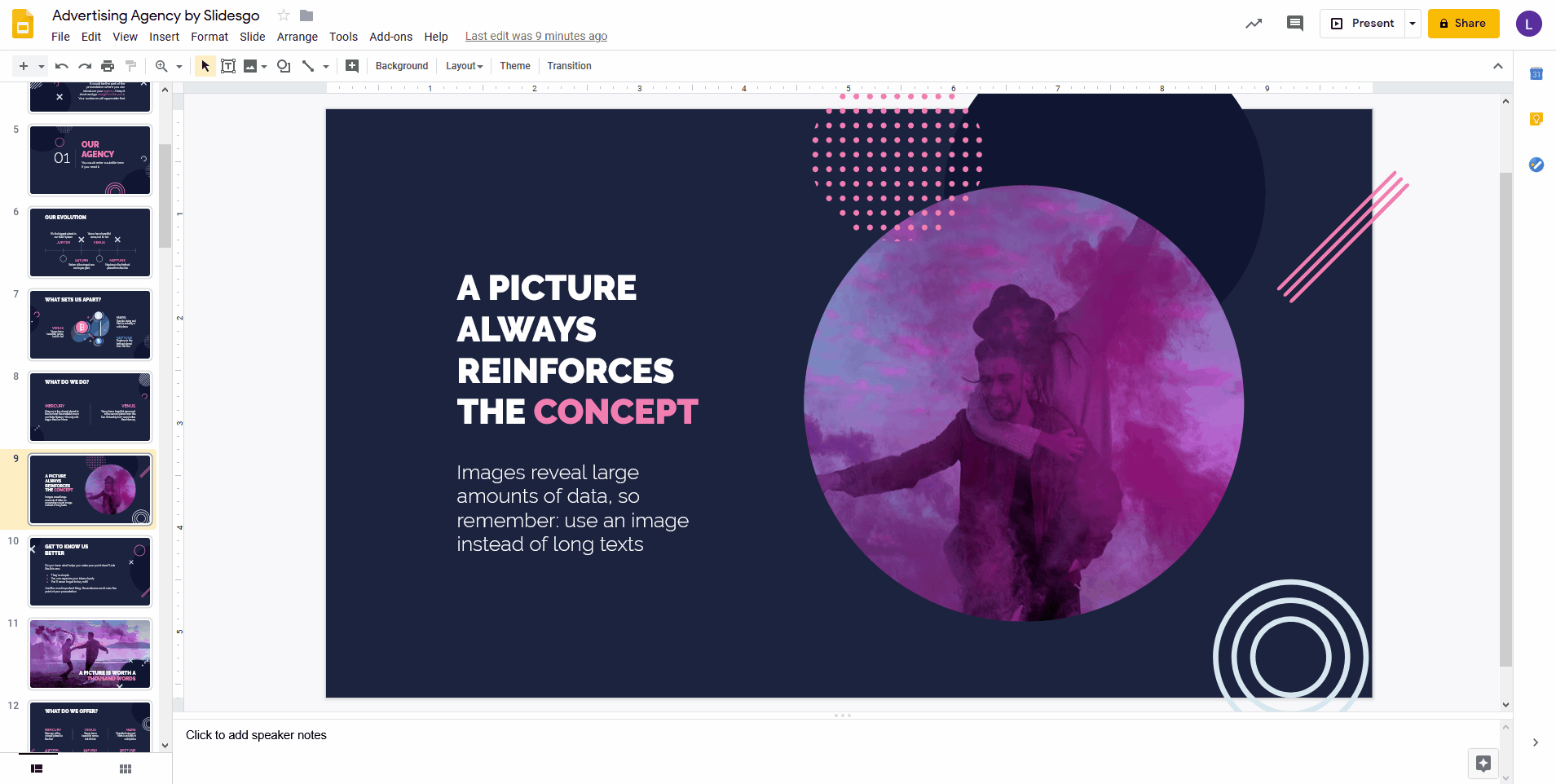
- There are several options for you to choose:
Arrange → Order: This allows you to place objects behind or on top of others, making them easier to select or rendering them more visible. For example, if you choose “Bring to front”, the selected element will be on top of the others, so you’ll be able to see it in its entirety. By choosing “Bring forward”, you’ll do the same, but one layer at a time.
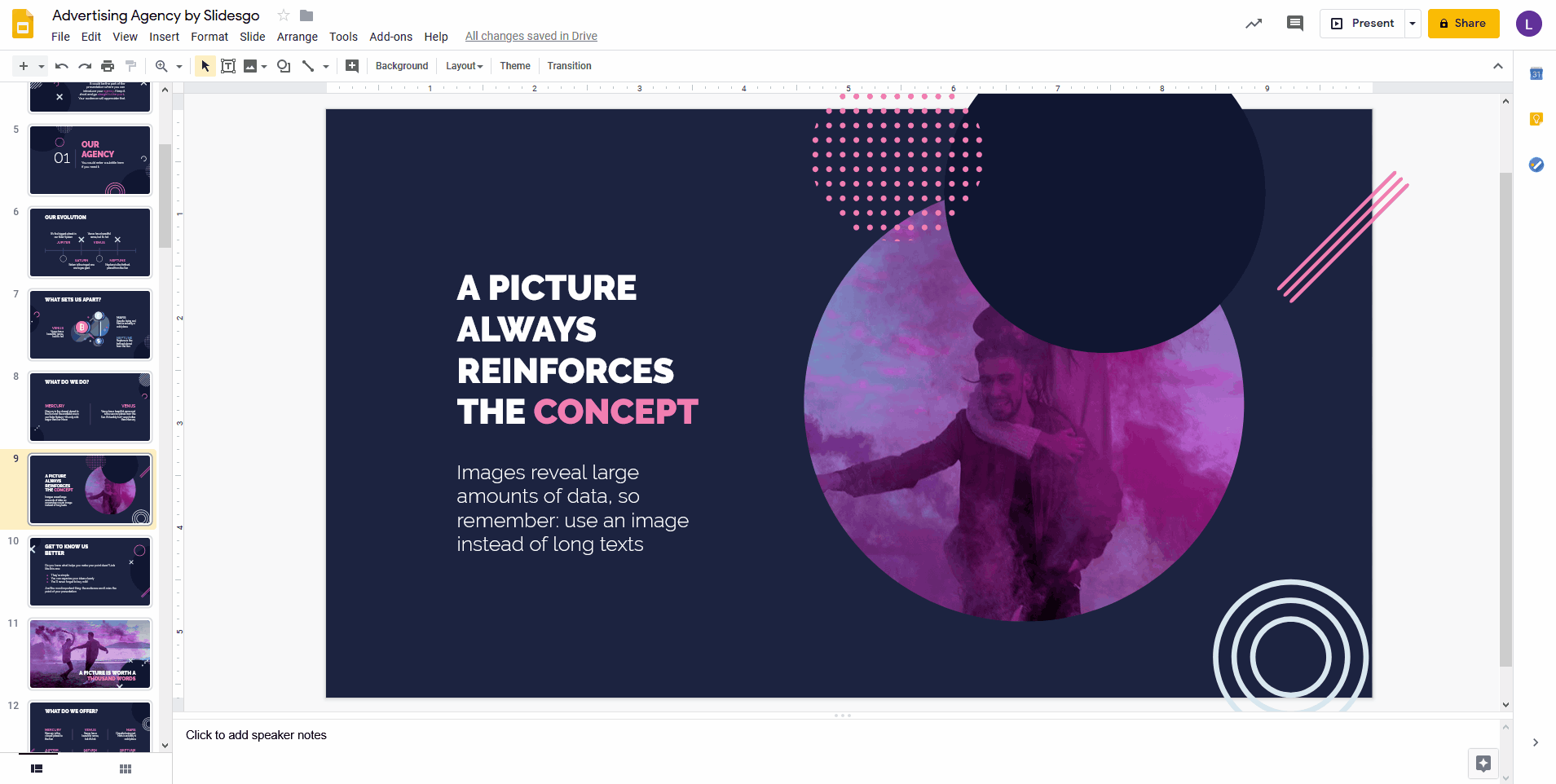
Arrange → Order → Send to back: By choosing this option, you’ll place the selected element behind the others. You can do the same, one layer at a time, if you choose “Send backward” instead.
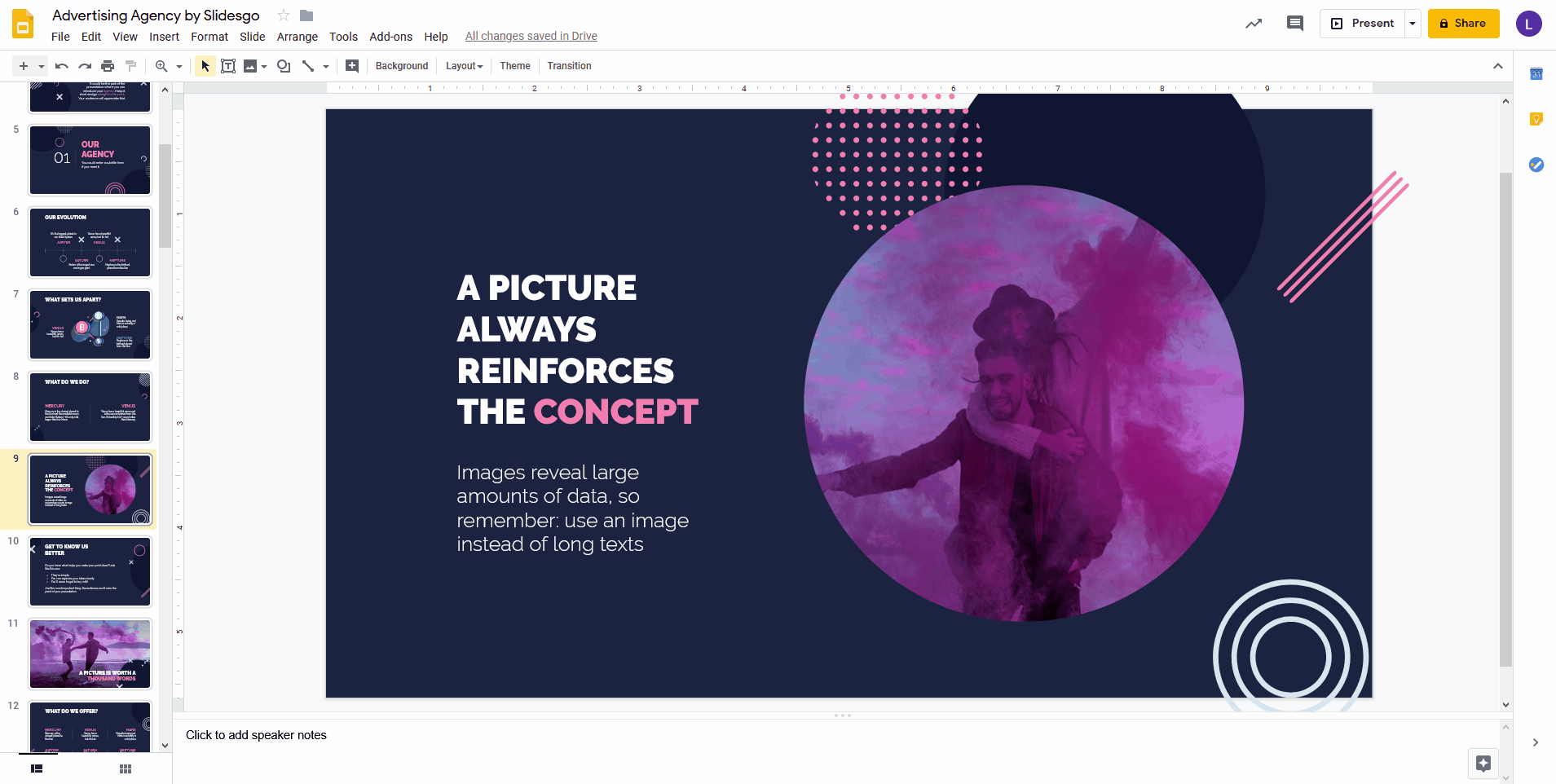
Arrange → Center on page → Horizontally: The element will be horizontally centered on the current slide.
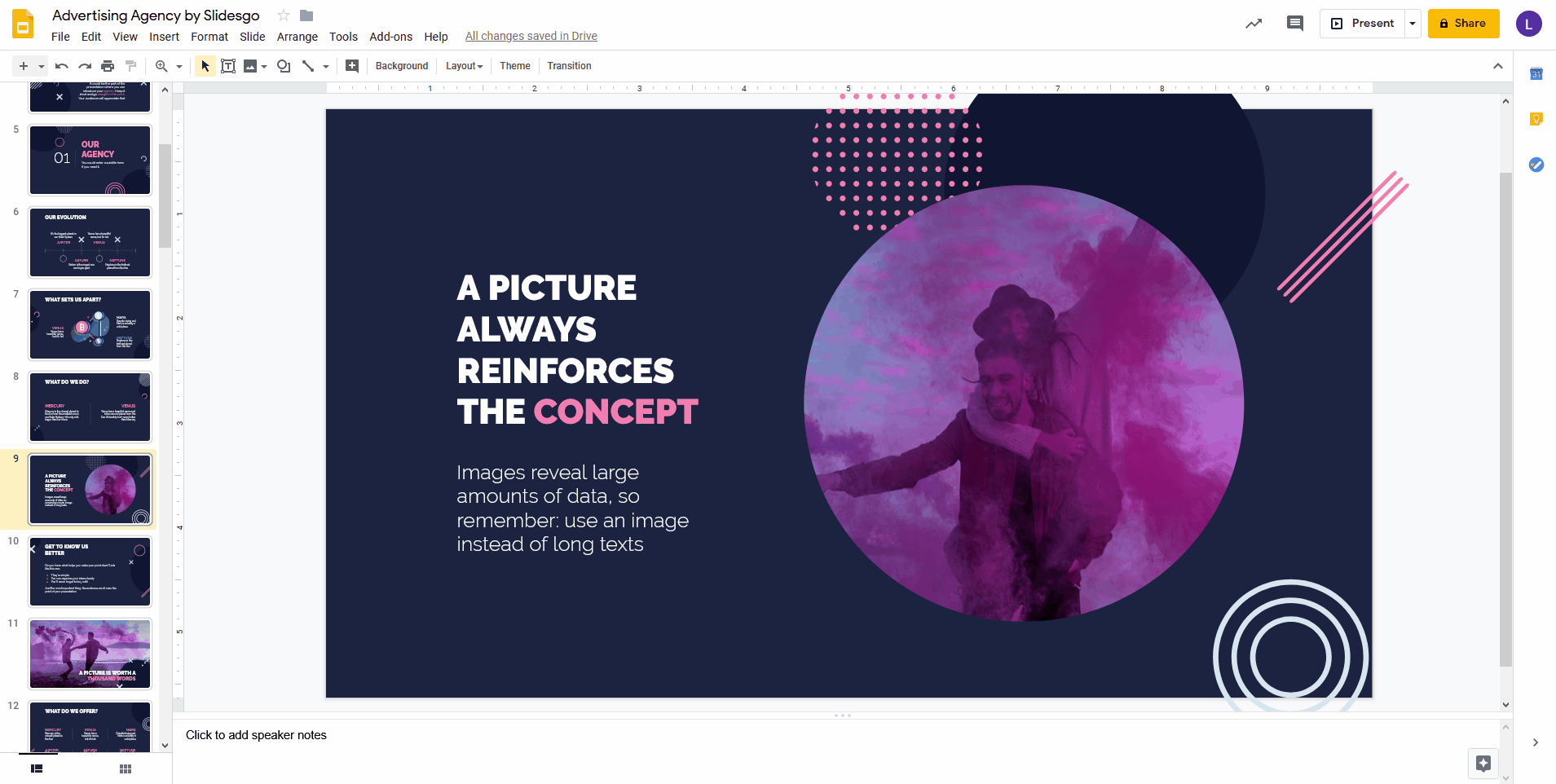
Arrange → Center on page → Vertically: The element will be vertically centered on the current slide.
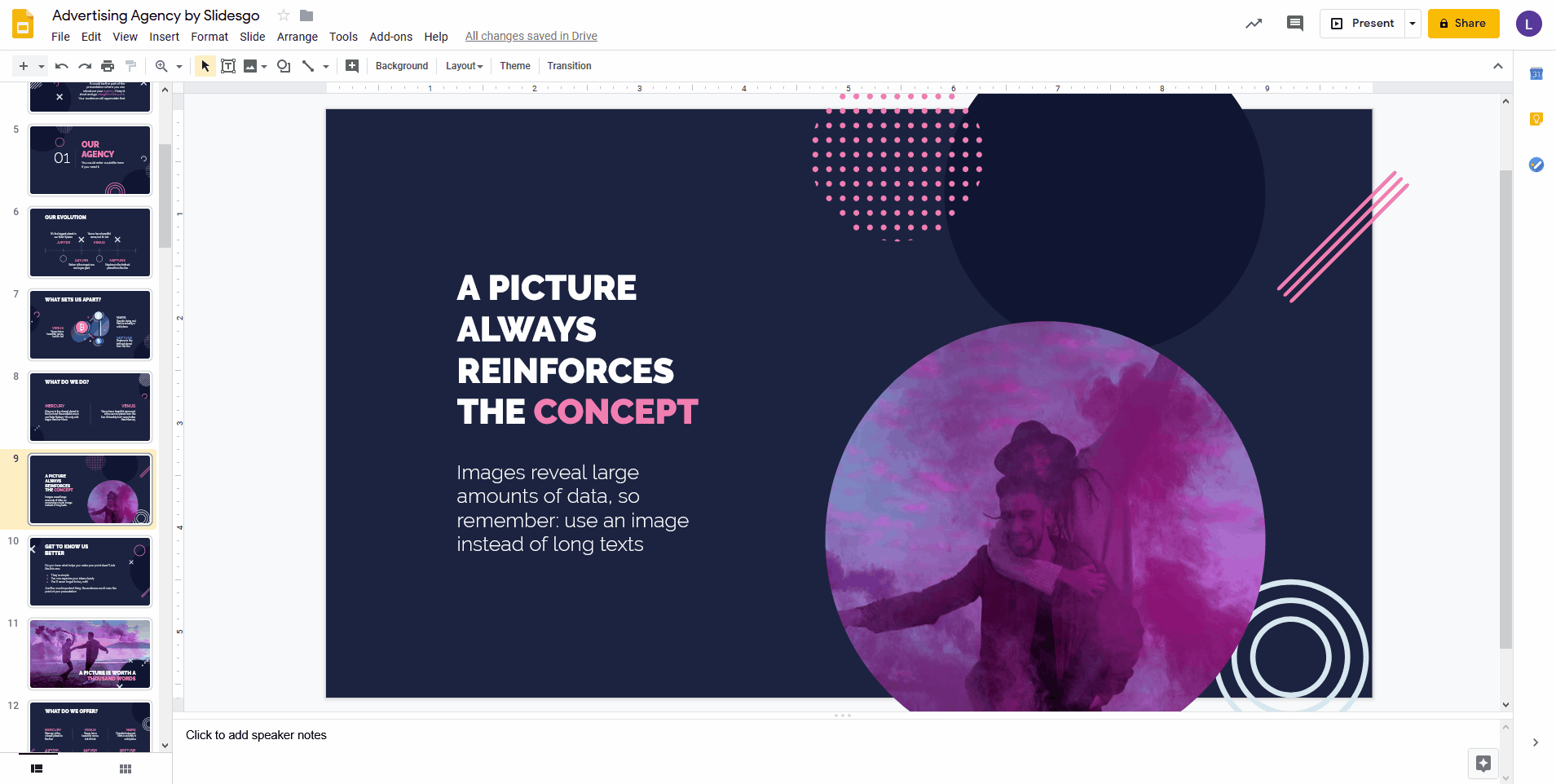
Arrange → Rotate: This allows you to rotate the object clockwise or counter-clockwise. You can also flip it horizontally or vertically.
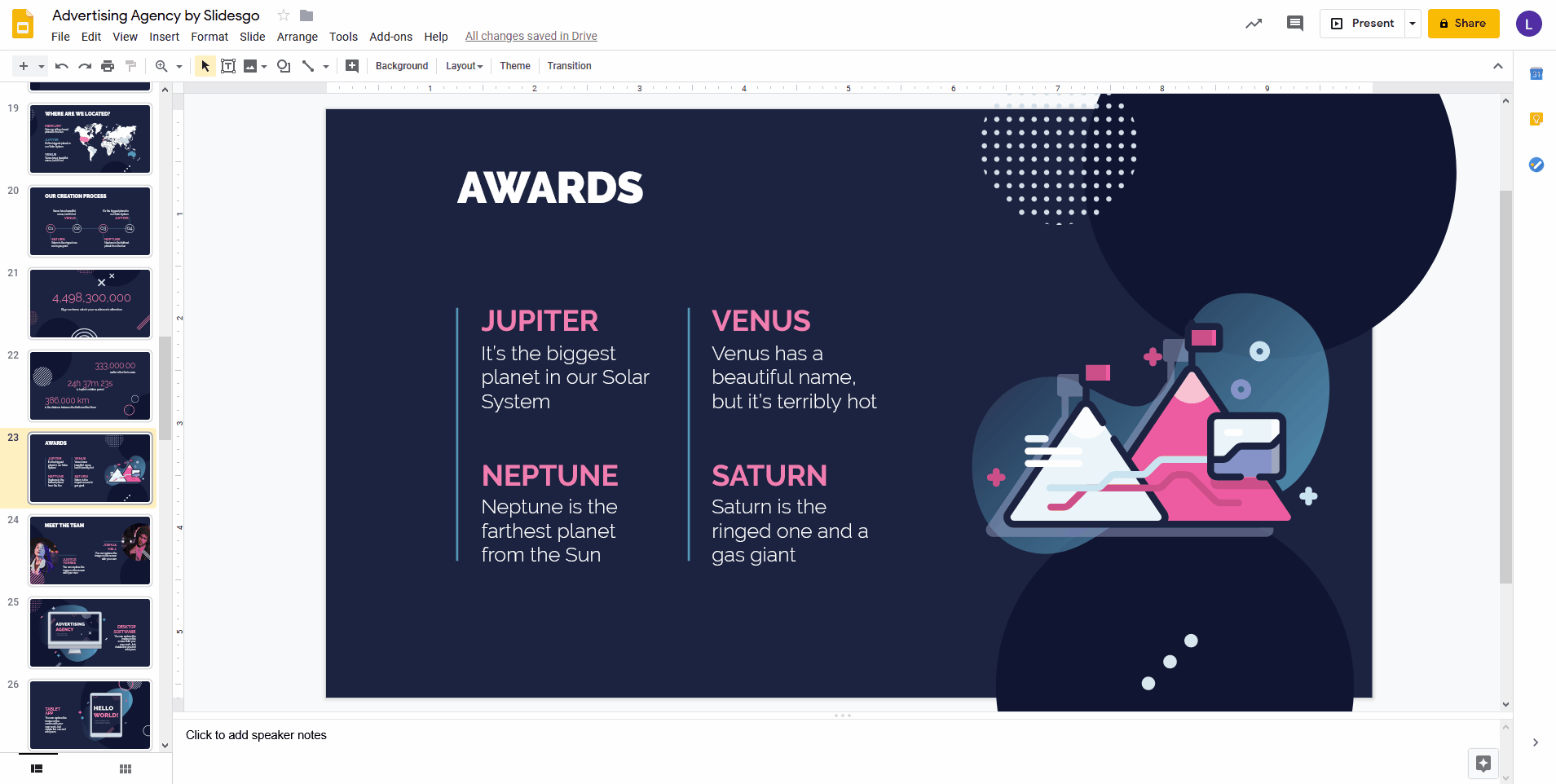
Arranging Multiple Objects at the Same Time
- Open your Google Slides presentation.
- Select the objects you want to arrange. To select more than one object at a time, click one of them, hold Shift and then click the rest of the elements.

- On the top menu, click Arrange. There are several options for you to choose:
Arrange → Align → Left: The selected elements will be aligned to the left.
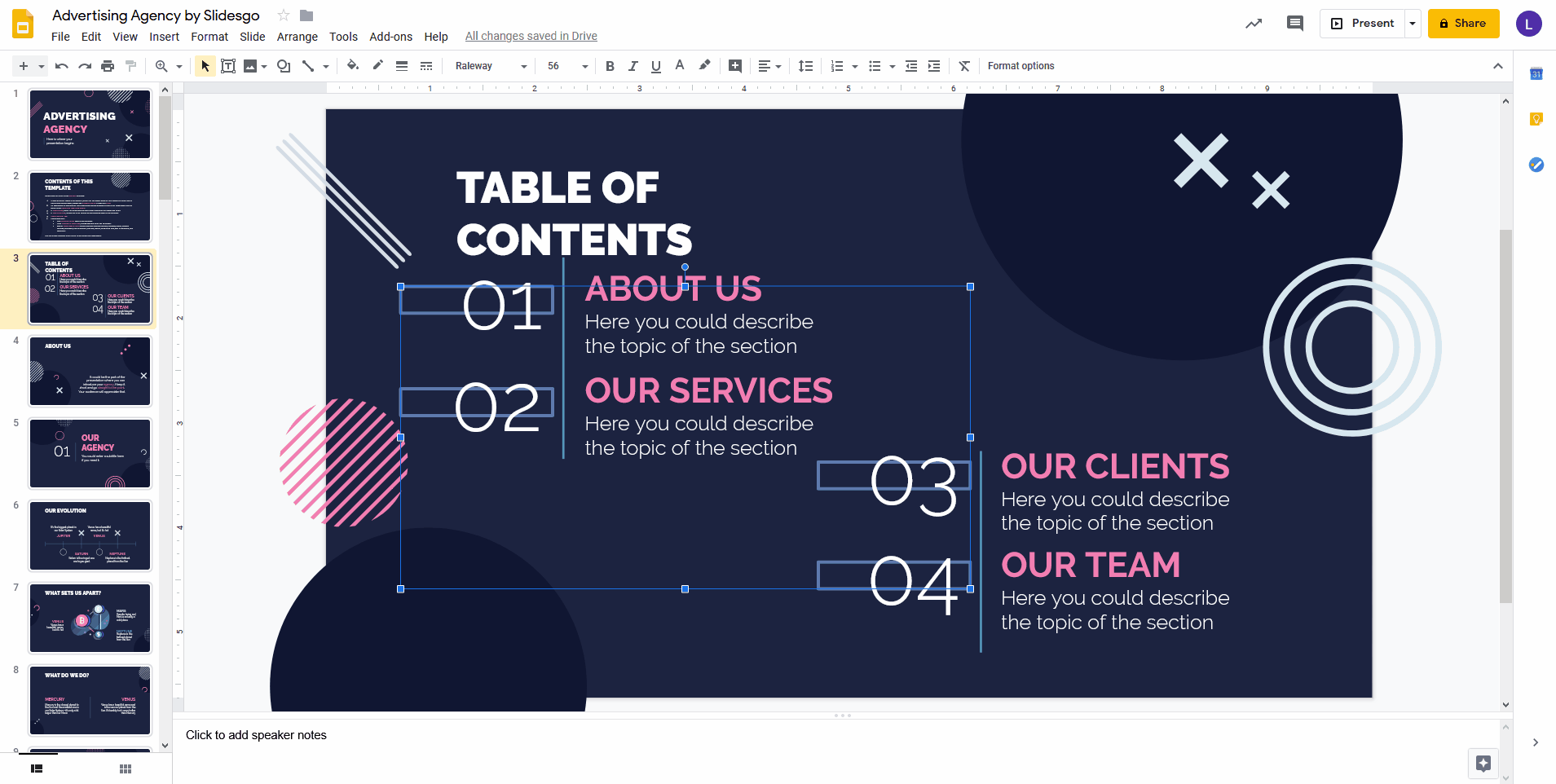
Arrange → Align → Center: The selected elements will be centered.
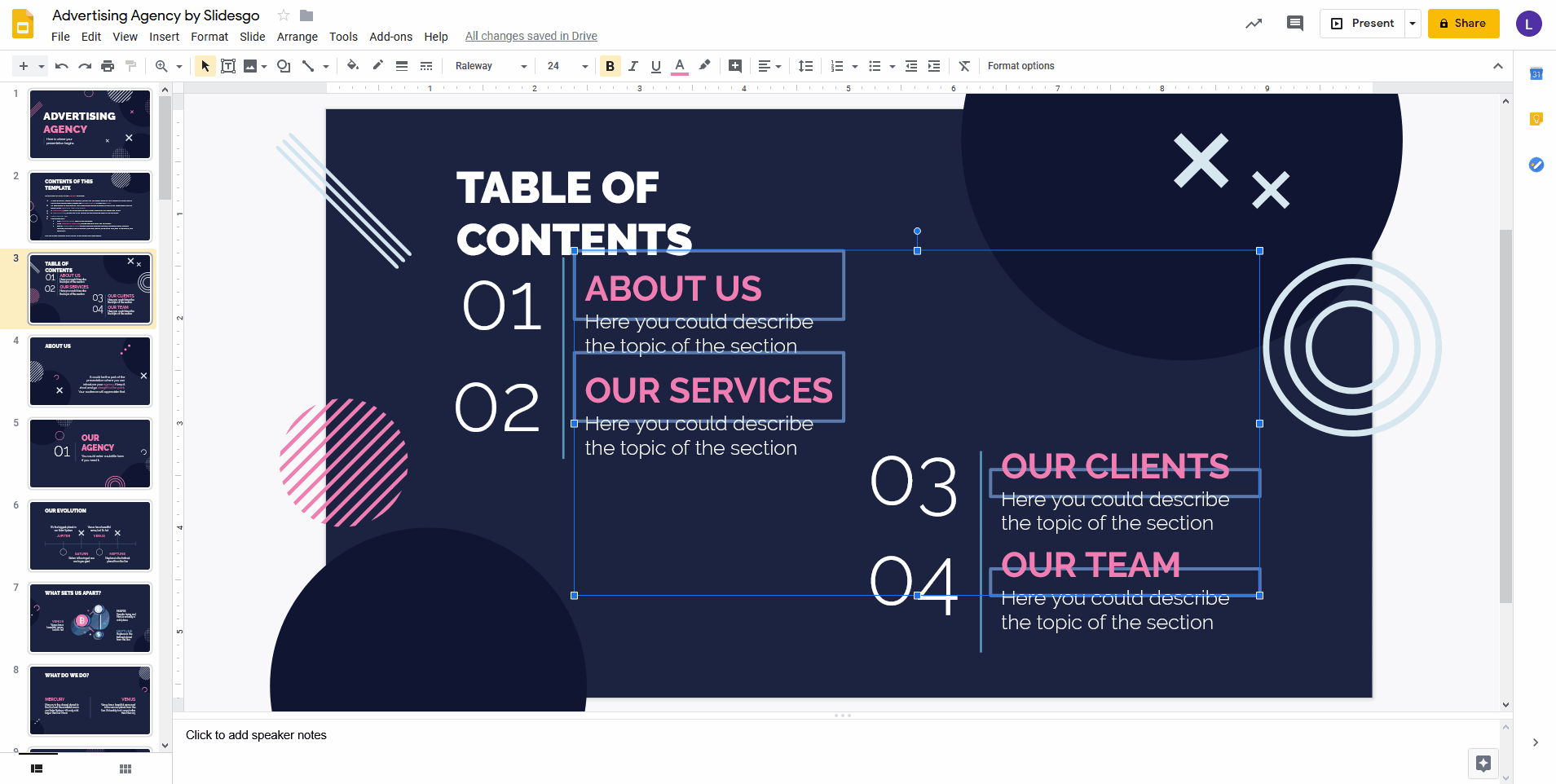
Arrange → Align → Right: The selected elements will be aligned to the right.

Arrange → Distribute: These options allow you to distribute the vertical and horizontal spacing between the selected elements evenly.
Arrange → Distribute → Horizontally.
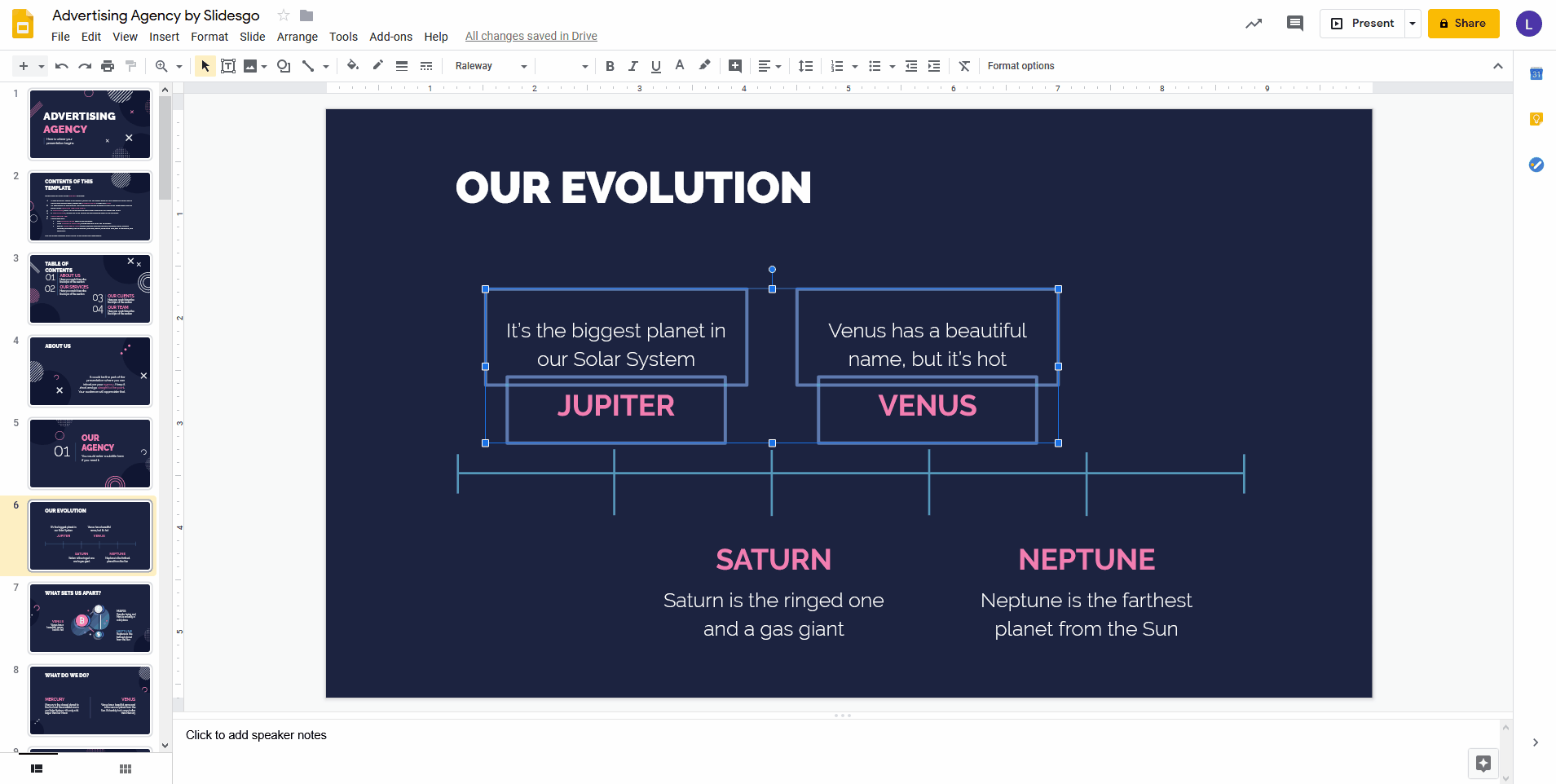
Arrange → Distribute → Vertically.
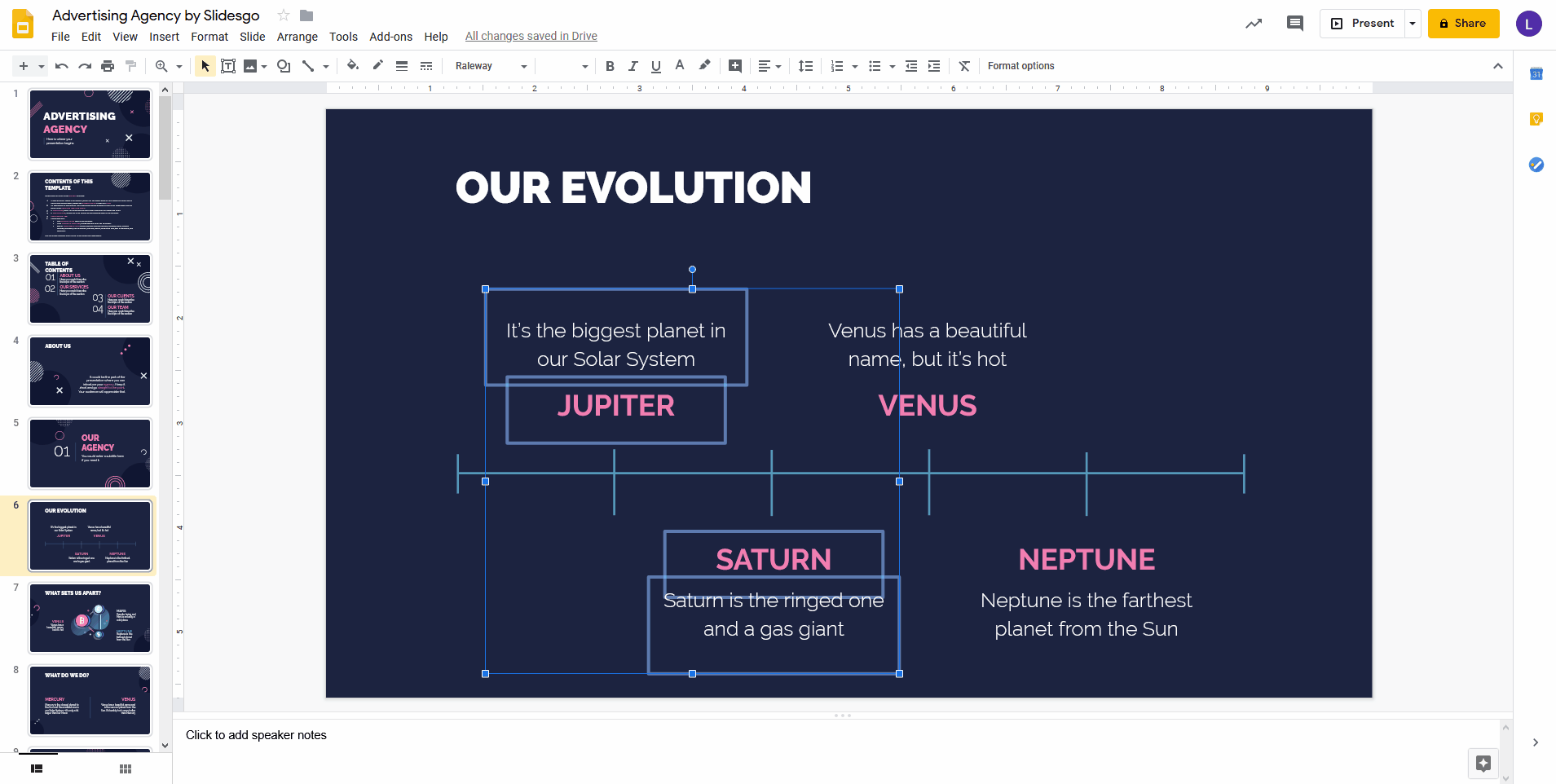
Arrange → Group: This allows you to group several objects so that they act as a single element.
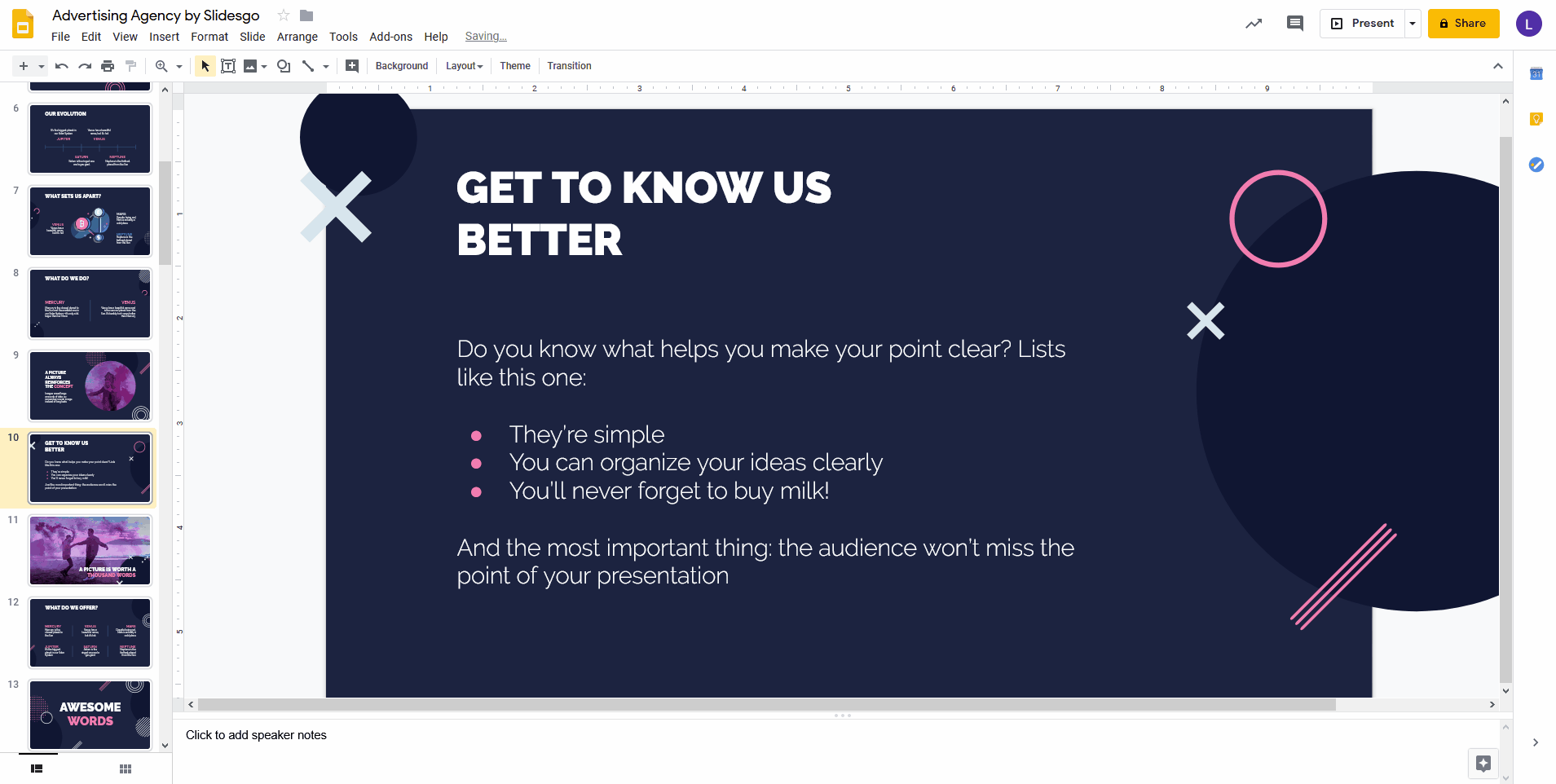
After grouping elements, you can still double-click one of them to work individually with it.
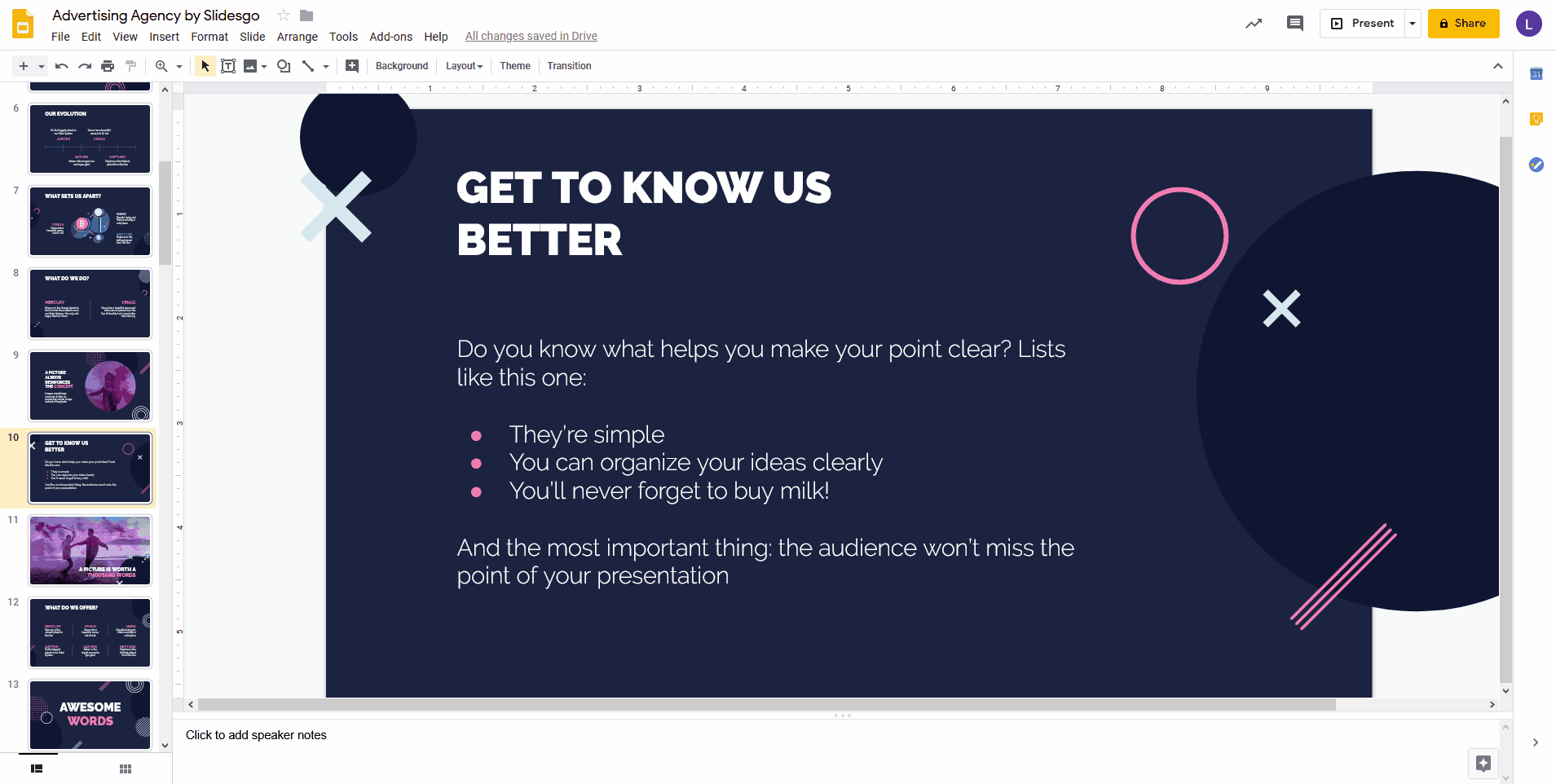
Arrange → Ungroup: This allows you to separate the elements on a group so that you can work with them individually.
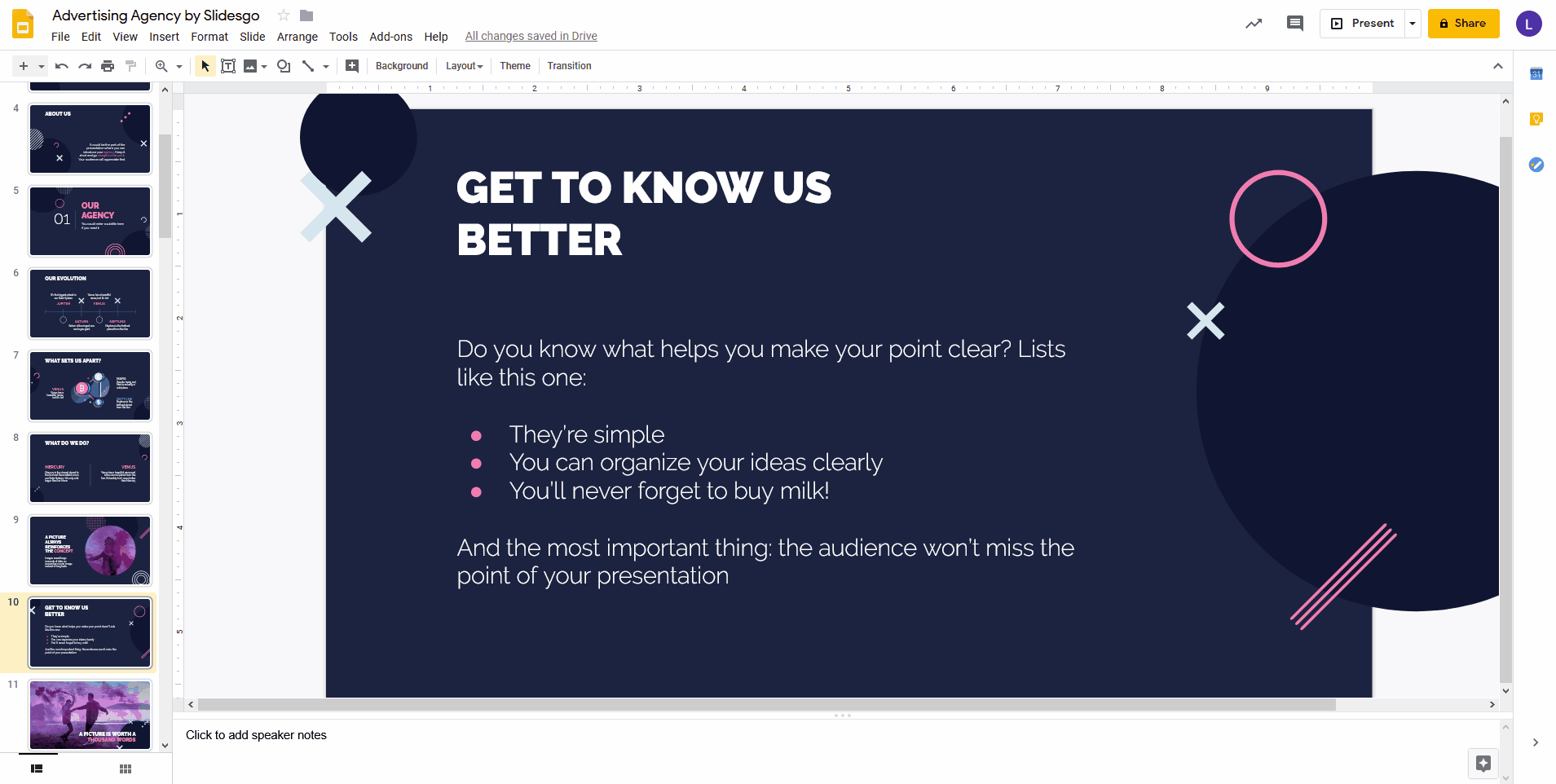
Aligning Objects on a Slide Automatically
- Open your Google Slides presentation and select the object you want to align.
There are two ways to align objects on a slide automatically:
View → Snap to → Guides: When dragging the object, you’ll see some red lines that indicate to which other element you’re aligning the selected one. This option is enabled by default.
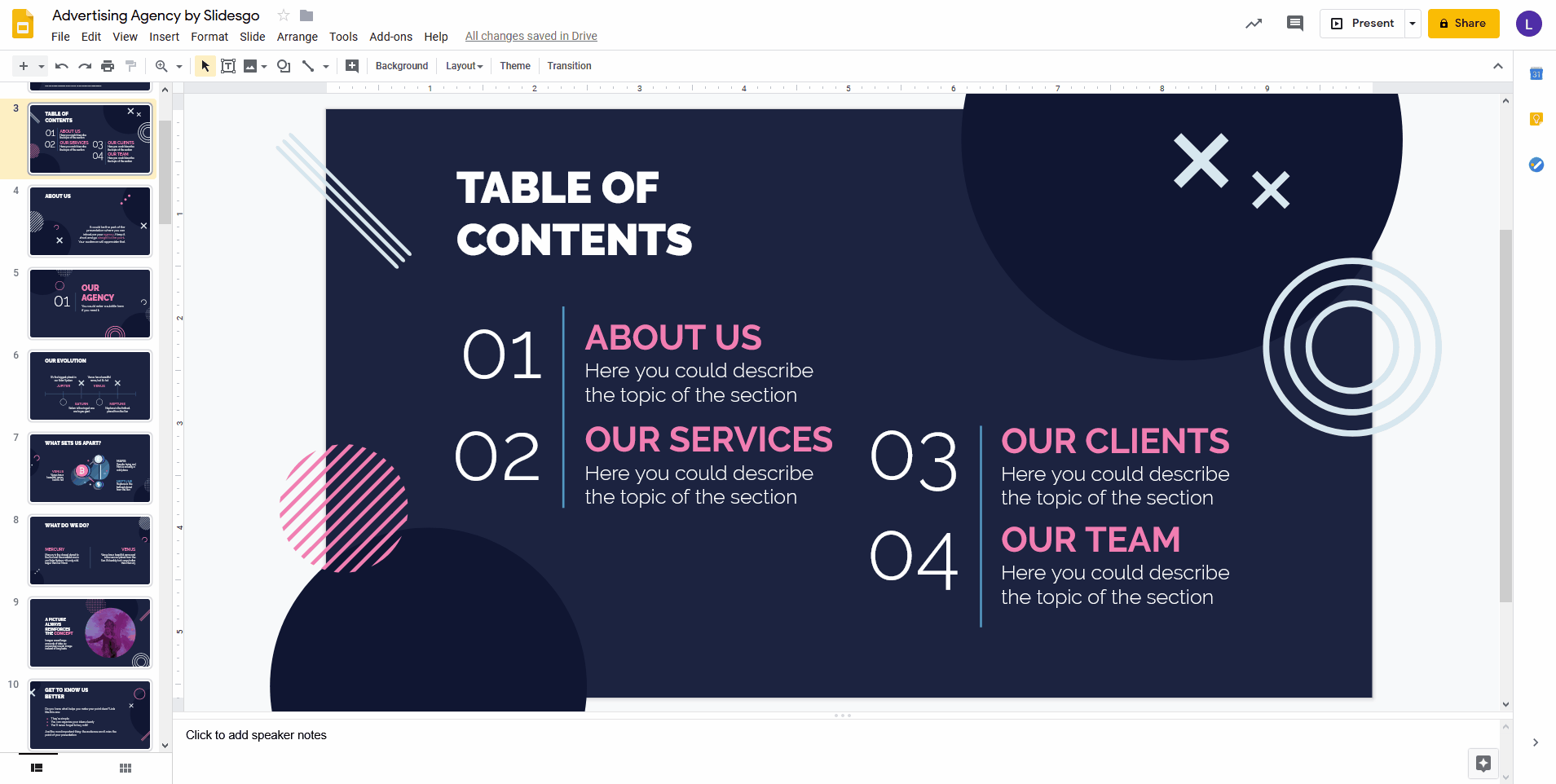
View → Snap to → Grid: When dragging the object, it will be aligned to an invisible grid. Unlike the previous option, you won’t see any red lines.
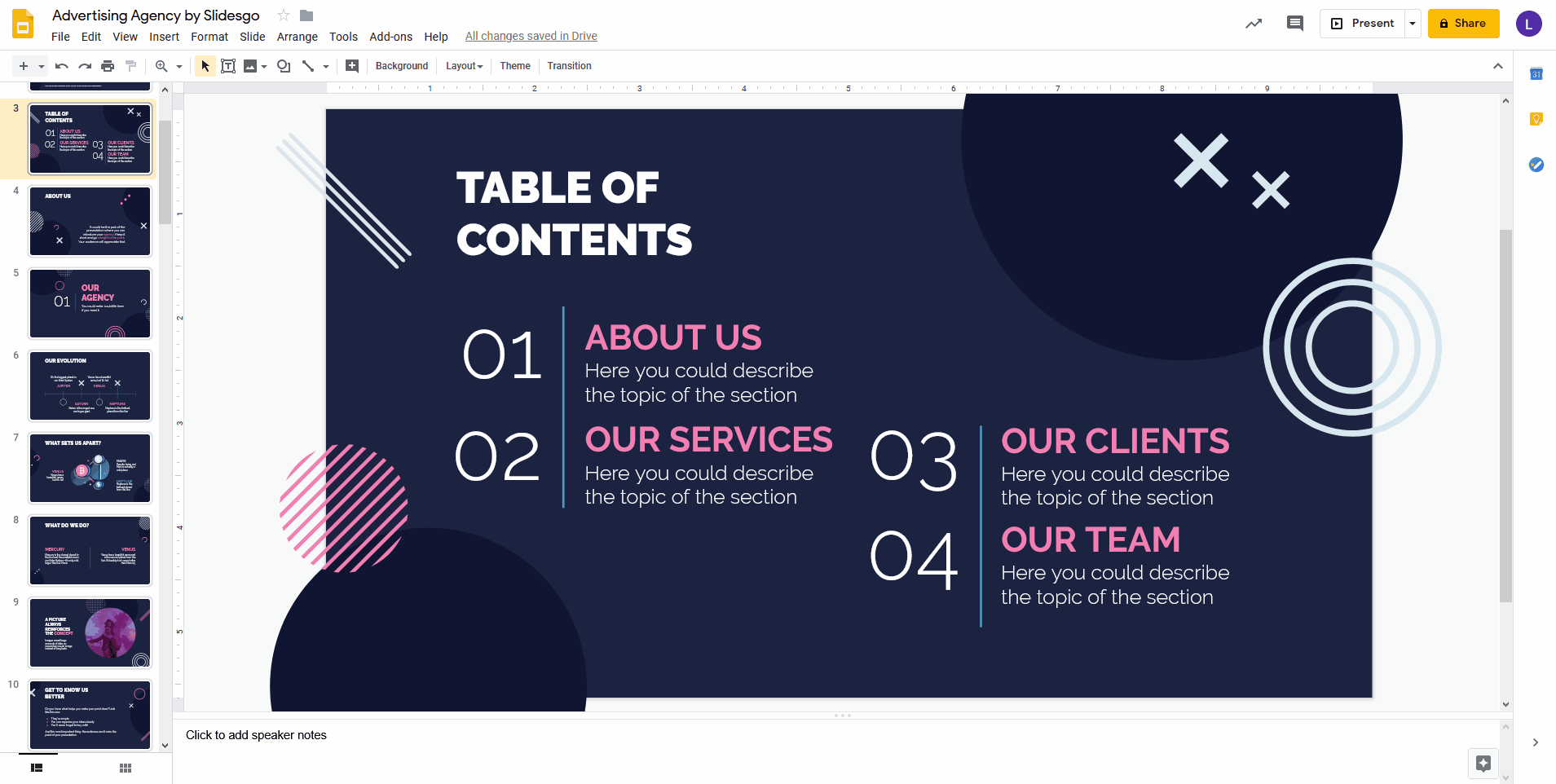
Tags
Edit & FormatDo you find this article useful?
Related tutorials

New feature available: edit our templates with Canva
Whenever you need to create, Slidesgo is there. We’re continually enhancing your presentation design process with templates that are primed to impress for any occasion. And in order to let your ideas flow best, comfort is key. How could Slidesgo help you with this? By making you feel right at home with our resources, no matter your preferred platform.You spoke, and we listened. Now, your favorite slides can be accessed on a new platform: Canva! This new format adds to our existing options (PowerPoint and Google Slides), expanding your ways to utilize our first-rate presentation content. We’ve started with a selection of Canva-ready...

How to print PowerPoint notes
Crafting an impactful PowerPoint slideshow and delivering a captivating presentation are distinct skills. The first focuses on designing appealing visuals to convey a clear message, while the second involves employing effective presentation techniques to ensure the audience grasps the idea. The content of this article will help you with the latter part of this process, guiding future presenters on how to print PowerPoint with speaker notes to enhance your presentations success and effectiveness.

Discover Our Online Presentation Software for Free
We have great news for you today! If you’ve been a Slidesgo fan for years (or months, or weeks, or days, or mere hours, we welcome everyone!), you’ll probably know for now that our templates are available mostly in two formats: for use in Google Slides and PowerPoint.Google Slides is a free tool, since you only need a Google account in order to use it. PowerPoint, on the other hand, is part of the Microsoft Office suite, so it’s not a free program, but that didn’t stop it from being one of the most popular options in the world!What if we...

Webinar: Presentation Audit
With more than 15,000 templates released on Slidesgo and a user base composed of millions of people, we estimate that the total number of presentations created adds up to… um, a lot! Our team of professional designers work very hard to provide you with editable slides so that the only thing you need to do is, well, customize the elements to your liking. Starting from any given template, the results may vary a lot depending on the person who edited the contents.Have you ever wondered “Is my presentation good enough?” and wished that an expert on presentations looked at your template...
